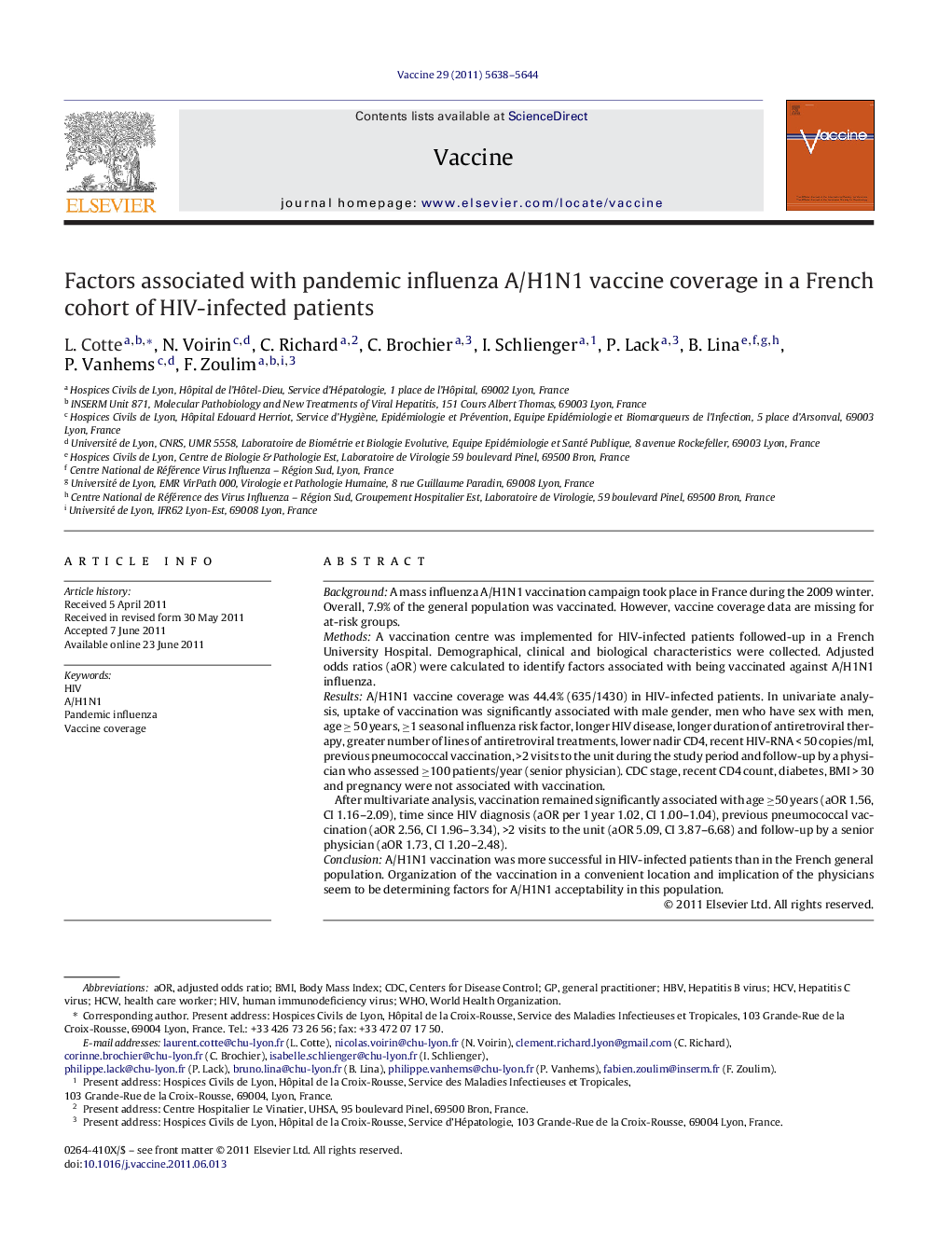| Article ID | Journal | Published Year | Pages | File Type |
|---|---|---|---|---|
| 2403257 | Vaccine | 2011 | 7 Pages |
BackgroundA mass influenza A/H1N1 vaccination campaign took place in France during the 2009 winter. Overall, 7.9% of the general population was vaccinated. However, vaccine coverage data are missing for at-risk groups.MethodsA vaccination centre was implemented for HIV-infected patients followed-up in a French University Hospital. Demographical, clinical and biological characteristics were collected. Adjusted odds ratios (aOR) were calculated to identify factors associated with being vaccinated against A/H1N1 influenza.ResultsA/H1N1 vaccine coverage was 44.4% (635/1430) in HIV-infected patients. In univariate analysis, uptake of vaccination was significantly associated with male gender, men who have sex with men, age ≥ 50 years, ≥1 seasonal influenza risk factor, longer HIV disease, longer duration of antiretroviral therapy, greater number of lines of antiretroviral treatments, lower nadir CD4, recent HIV-RNA < 50 copies/ml, previous pneumococcal vaccination, >2 visits to the unit during the study period and follow-up by a physician who assessed ≥100 patients/year (senior physician). CDC stage, recent CD4 count, diabetes, BMI > 30 and pregnancy were not associated with vaccination.After multivariate analysis, vaccination remained significantly associated with age ≥50 years (aOR 1.56, CI 1.16–2.09), time since HIV diagnosis (aOR per 1 year 1.02, CI 1.00–1.04), previous pneumococcal vaccination (aOR 2.56, CI 1.96–3.34), >2 visits to the unit (aOR 5.09, CI 3.87–6.68) and follow-up by a senior physician (aOR 1.73, CI 1.20–2.48).ConclusionA/H1N1 vaccination was more successful in HIV-infected patients than in the French general population. Organization of the vaccination in a convenient location and implication of the physicians seem to be determining factors for A/H1N1 acceptability in this population.
